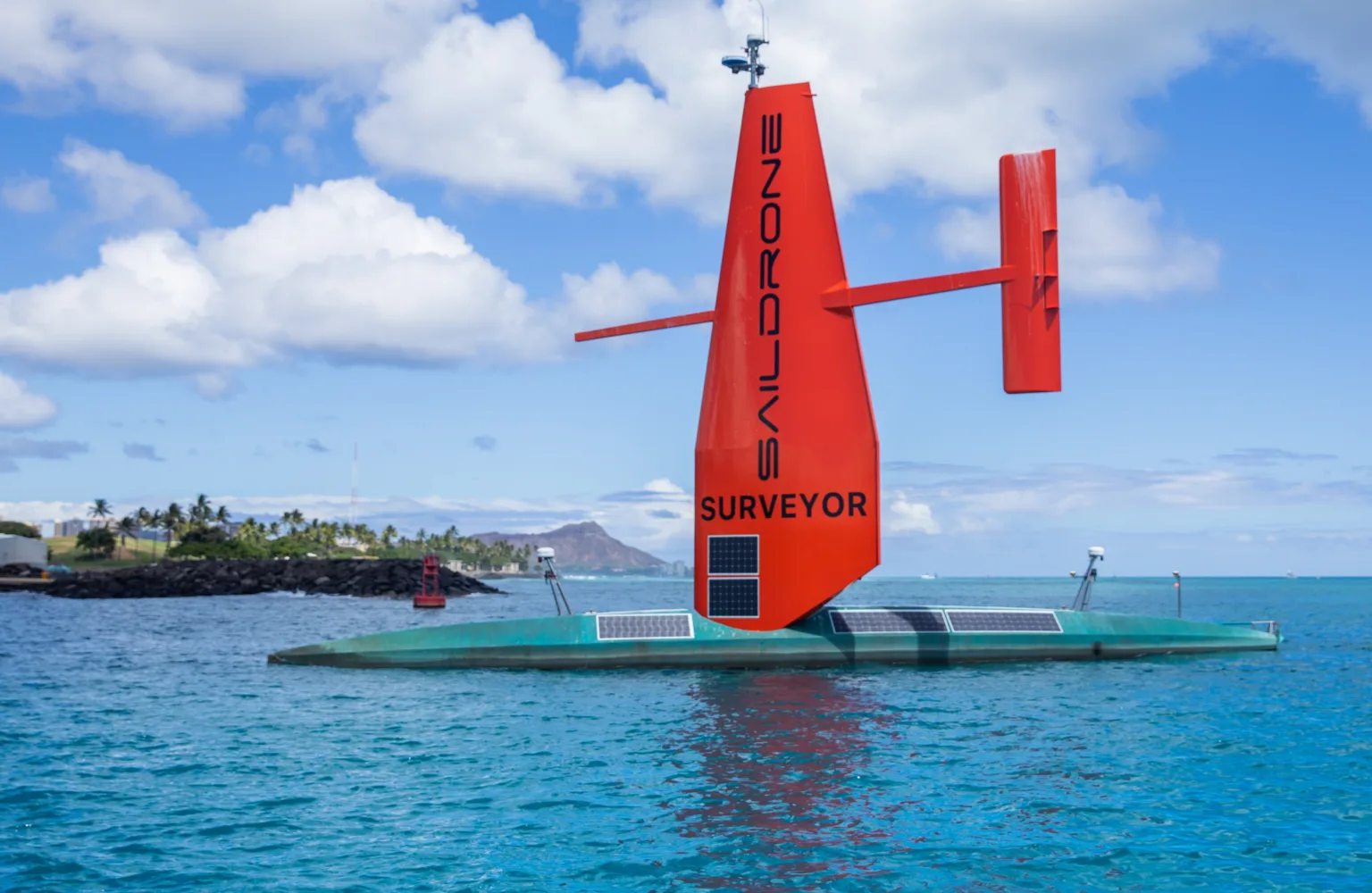Saildrone is making a splash in autonomous oceanic monitoring.
The startup’s nautical data collection technology has tracked hurricanes up close in the North Atlantic, discovered a 3,200-foot underwater mountain in the Pacific Ocean and begun to help map the entirety of the world’s ocean floor.
Based in the San Francisco Bay Area, the company develops autonomous uncrewed surface vehicles (USVs) that carry a wide range of sensors. Its data streams are processed on NVIDIA Jetson modules for AI at the edge and are being optimized in prototypes with the NVIDIA DeepStream software development kit for intelligent video analytics.
Saildrone is seeking to make ocean intelligence collection cost-effective, offering data-gathering systems for science, fisheries, weather forecasting, ocean mapping and maritime security.
It has three different USVs, and its Mission Portal control center service is used for monitoring customized missions and visualizing data in near real time. Also, some of Saildrone’s historical data is freely available to the public.
“We’ve sailed into three major hurricanes, and right through the eye of Hurricane Sam, and all the vehicles came out the other side — they are pretty robust platforms,” said Blythe Towal, vice president of software engineering at Saildrone, referring to a powerful cyclone that threatened Bermuda in 2021 .
Saildrone, founded in 2012, has raised $190 million in funding. The startup is a member of NVIDIA Inception, a program that provides companies with technology support and AI platforms guidance.
Keeping an AI on Earth’s Waters
Saildrone is riding a wave of interest for use of its crewless data collection missions in environmental studies of oceans and lakes.
The University of Hawaii at Manoa has enlisted the help of three 23-foot Saildrone Explorer USVs to study the impact of ocean acidification on climate change. The six-month mission around the islands of Hawaii, Maui, Oahu and Kaui will be used to help evaluate the ocean’s health around the state.
Ocean acidification is a reduction in its pH, and contributing factors include the burning of fossil fuels and farming. These can have an impact on coral, oysters, clams, sea urchins and calcareous plankton, which can threaten marine ecosystems.
Saildrone recently partnered with Seabed 2030 to completely map the world’s oceans. Seabed 2030 is a collaboration between the Nippon Foundation and the General Bathymetric Chart of the Oceans, or GEBCO, to map ocean floors worldwide by 2030.
“Saildrone’s vision is of a healthy ocean and a sustainable planet,” said Saildrone founder and CEO Richard Jenkins. “A complete map of the ocean floor is fundamental to achieving that vision.”
The scientific community worldwide is embracing NVIDIA AI for climate studies, including for hyper-local climate modeling, AI to improve sequestering carbon, renewable energy research and many other areas. Dedicating its own expertise, NVIDIA is developing the world’s most powerful AI supercomputer for predicting climate change, named Earth-2, which will be used to create a digital twin of Earth in Omniverse.
Energy-Efficient Data Processing
Saildrone USVs enable researchers to collect more data using fewer resources than traditional boats and crews, conserving energy and keeping crews out of danger.
The USVs are built for harsh weather and long missions. One of its USVs recently completed a 370-day voyage monitoring carbon dioxide, sailing from Rhode Island across the North Atlantic to Cabo Verde, down to the equator off the west coast of Africa, and back to Florida.
Running mostly on solar and wind power requires energy-efficient computing to handle so much data processing.
“With solar power, being able to keep our compute load power efficiency lower than a typical computing platform running GPUs by implementing NVIDIA Jetson is important for enabling us to do these kinds of missions,” said Towal.
Oceanic Surveying Meets Edge AI
Saildrone relies on the NVIDIA JetPack SDK for access to a full development environment for hardware-accelerated edge AI on the Jetson platform. It runs machine learning on the module for image-based vessel detection to aid navigation.
Saildrone pilots set waypoints and optimize the routes using metocean data — which includes meteorological and oceanographic information — returned from the vehicle. All of the USVs are monitored around the clock, and operators can change course remotely via the cloud if needed.
Machine learning is mostly run locally on the Jetson module— but can run on the cloud as well with a satellite connection — because bandwidth can be limited and costly to shuttle from its robust suite of sensors producing high-resolution imagery.
The USVs have oceanographic sensors for measurement of wind, temperature, salinity and dissolved carbon. The company also enables research of ocean and lake floors with bathymetric sensors, including deep sonar mapping with single- or multi-beam for going deeper or wider. And its perceptual sensor suite includes radar and visual underwater acoustic sensors.
DeepStream Goes Deep Sea
Saildrone taps into the NVIDIA DeepStream SDK for its vision AI applications and services. Developers can build seamless streaming pipelines for AI-based video, audio and image analytics using the kit.
Offering a 10x throughput improvement, DeepStream can be applied from edge to cloud to develop optimized intelligent video applications that handle multiple video, image and audio streams.
Saildrone will rely on DeepStream for image preprocessing and model inference, which enables machine learning at the edge, even at sea while powered by sun and wind.
Learn more about NVIDIA Jetson modules and the DeepStream SDK.
- teenage engineering OP-XY review: after dark - 06/01/2025
- Mehatronika interviews: Rodrigo Sim - 05/17/2025
- LattePanda Mu i3-N305 review: More power - 03/16/2025
